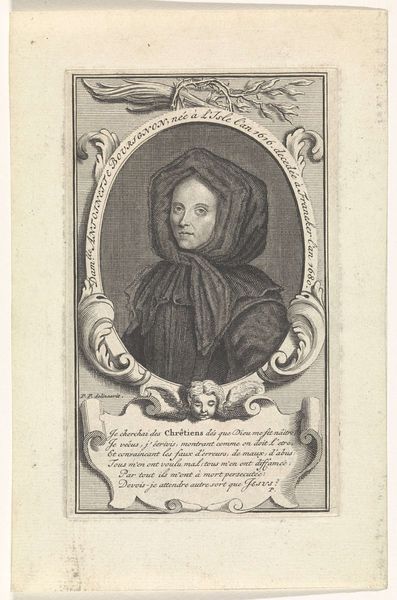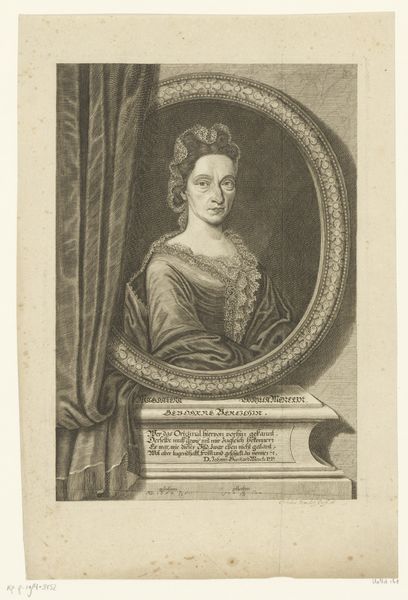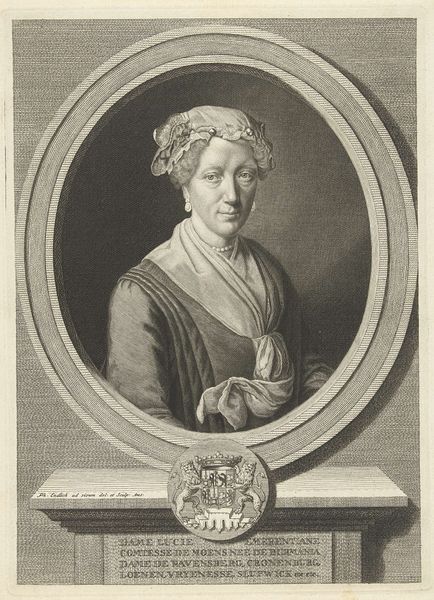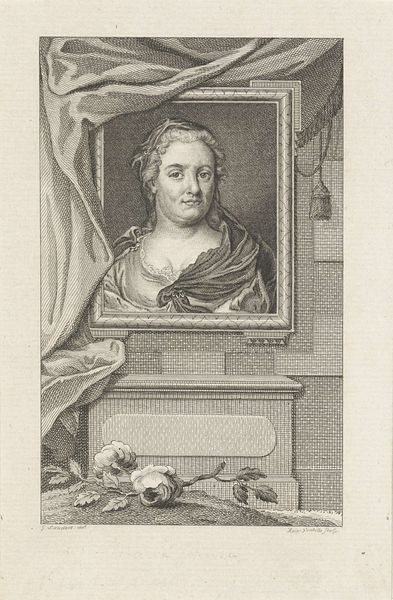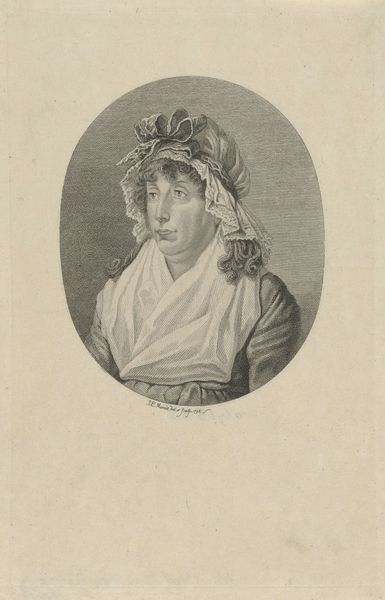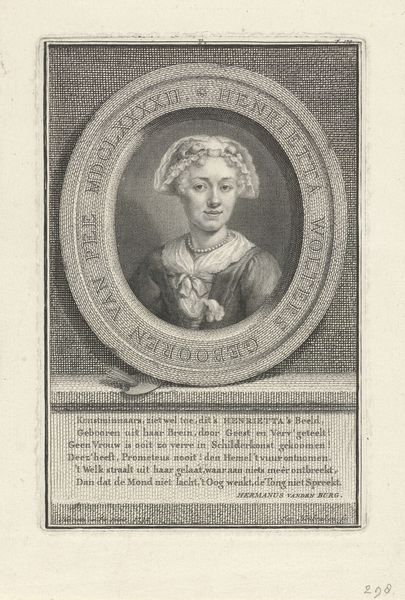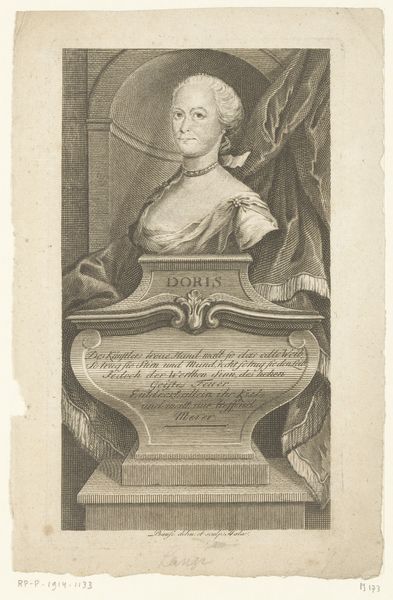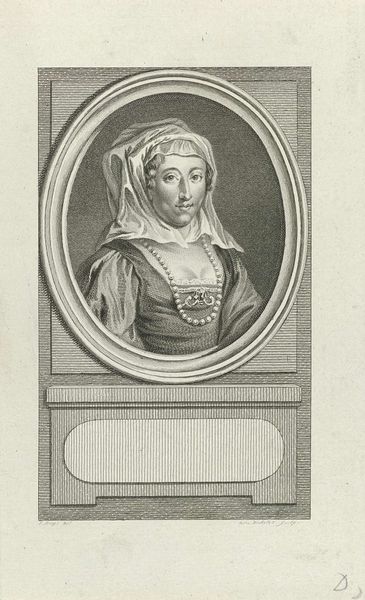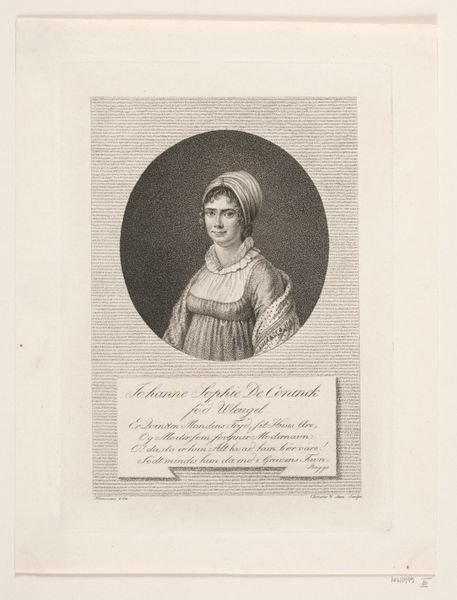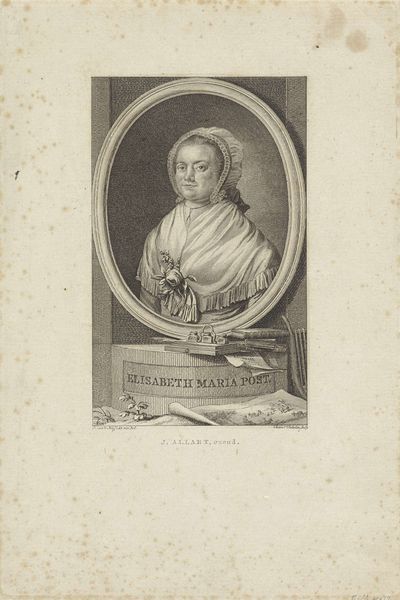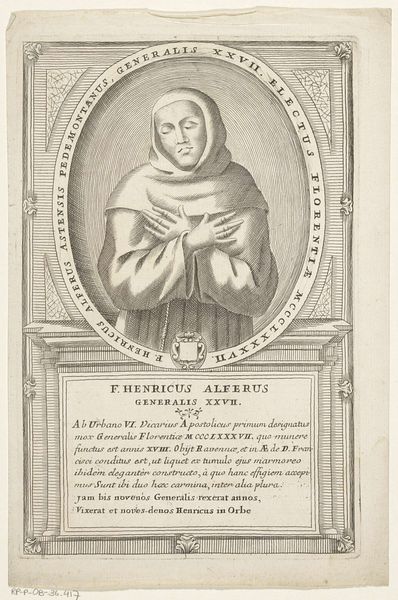
engraving
#
portrait
#
neoclacissism
#
history-painting
#
engraving
Dimensions: height 278 mm, width 217 mm
Copyright: Rijks Museum: Open Domain
Curator: Here we have "Portrait of Johanna Jacoba van Beaumont," an engraving from 1799 by Noach van der (II) Meer, housed here at the Rijksmuseum. The delicate lines… it feels almost ethereal. Editor: There is a compelling calmness emanating from this piece, and yet, something unsettling about its uniformity. How might the printing process of engraving reflect the sitter's status or the context of its creation? Curator: Well, engraving, as a replicable medium, democratizes portraiture to some extent, making images more accessible. Considering Johanna Jacoba van Beaumont lived in a time of significant political and social change in the Netherlands, perhaps this speaks to the broader societal shifts? It allows us to examine the consumption and dissemination of imagery during the late 18th century. Editor: The attire is telling as well. The stark white bonnet and scarf, in combination with her modest gown, speaks of virtuous domesticity, an emphasis that aligned well with Neoclassical ideals circulating through that time. She is portrayed seated at a table with books and documents suggesting literacy and intellect. These symbols are designed to project a certain cultural narrative about women, and in the Netherlands during this time the female domestic identity carried social weight. Curator: Certainly. And look at the frame Van der Meer gives her, reminiscent of architectural styles of the time and the influence of classicism! That framed engraving hanging in a domestic space may communicate stability to some, but consider how such imagery circulated amidst revolution… Editor: Right. Though this looks peaceful, even idealized, these domestic images carry coded messaging. A woman of letters represents order. This reinforces class structures at a time of instability. Curator: I agree. In thinking about the physical process, engraving demands incredible precision. Think about the labour, time, and expertise that goes into this reproductive medium, a testament to craftsmanship, in service of producing potentially political propaganda, perhaps! Editor: Absolutely. Analyzing symbols with respect to their temporal environment helps reveal hidden cultural attitudes and fears. Curator: Yes, the art is always tied to means of production and the consumption of such art reflects not just economic factors, but also power dynamics. Editor: Exactly. So many layers exposed here, a potent and deceptively tranquil representation of social and political order through symbols of domestic life.
Comments
No comments
Be the first to comment and join the conversation on the ultimate creative platform.

